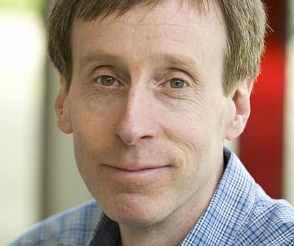Researchers from the Wellcome Trust Sanger Institute and Babraham Institute, both in the U.K., developed a technique for sequencing DNA molecules requiring a tiny fraction of material and without the laborious library preparation that had been needed before. The work of the team led by Harold Swerdlow (pictured left), Sanger Institute research and development director, appears in the December issue of the journal Biotechniques.
For the study, the Sanger/Babraham team used the PacBio RS sequencing system made by Pacific Biosciences in Menlo Park, California. The PacBio RS can monitor and analyze individual DNA molecules in real time. The system includes analytical software that the company says can provide results tailored to the investigator’s protocol and experiment design.
The researchers tested their technique on various bacteria and viruses, in particular microbes associated with antibiotic resistance, including linear fragments covering the entire genome of a methicillin-resistant Staphylococcus aureus (MRSA) bacterium. With the PacBio system, the team generated sequence data from one nanogram of DNA, which they say is a quantity some 500 times smaller than needed in current practices.
In one test, they analyzed the genome of one organism with an even smaller quantity, some 800 picograms of DNA. In this test, the PacBio system generated 70 fragments of the microbe’s genome, enough information for the team to identify the specific organism being sequenced, although a fraction of the quantity produced in standard library operations.
In addition, the researchers were able to analyze their samples without the standard pre-sequencing workflow known as DNA library preparation, a time-consuming and laborious process, and sometimes destructive of the sample for study. Creation of a DNA library normally requires extracting and purifying the DNA from one organism for storage in another organsim, such as a bacterium, as recombinant DNA molecules. The bacteria are then grown in a culture to reproduce into sufficient quantities of recombinant DNA for analysis.
Sanger Institute’s Paul Coupland, the study’s first author, says the technique “has great potential for a fast and efficient way of identifying organisms in hospitals and other health care settings. It also gives us the absolute confidence there is no library-based bias in the sequence data, quite simply because no library was ever created.”
Swerdlow adds, “Our technique can be performed without any prior knowledge of the sequence and with no organism-specific reagents, in a short space of time. This makes it a promising alternative for clinical situations such as infection control.”
Read more:
- Wake Forest, NanoMedica to Partner on Sequencing Technology
- Faster Whole Genome Sequencing Developed for Infants
- 23andMe Opens Application Interface to Outside Developers
- Techniques Developed for Deeper Single-Cell Gene Sequencing
- Agilent, University, Agencies to Partner on Pathogen Genomes
* * *


 RSS - Posts
RSS - Posts
[…] DNA Sequencing Performed with Tiny Samples, No Library Prep […]
[…] DNA Sequencing Performed with Tiny Samples, No Library Prep […]
DNA sequencing also used to determine the sequence of genes, full chromosomes or entire genomes. Depending on the methods used, sequencing may provide the order of nucleotides in DNA or RNA isolated from cells of animals, plants, bacteria, archaea, or virtually any other source of genetic information. The resulting sequences may be used by researchers in molecular biology or genetics to further scientific progress or may be used by medical personnel to make treatment decisions or aid in genetic counseling.
————————–
blue lion biotech
Thanks Charles for the additional details. – AK